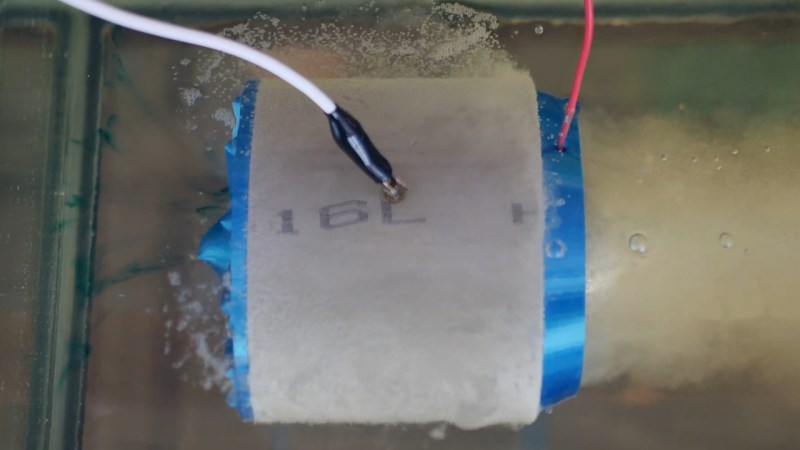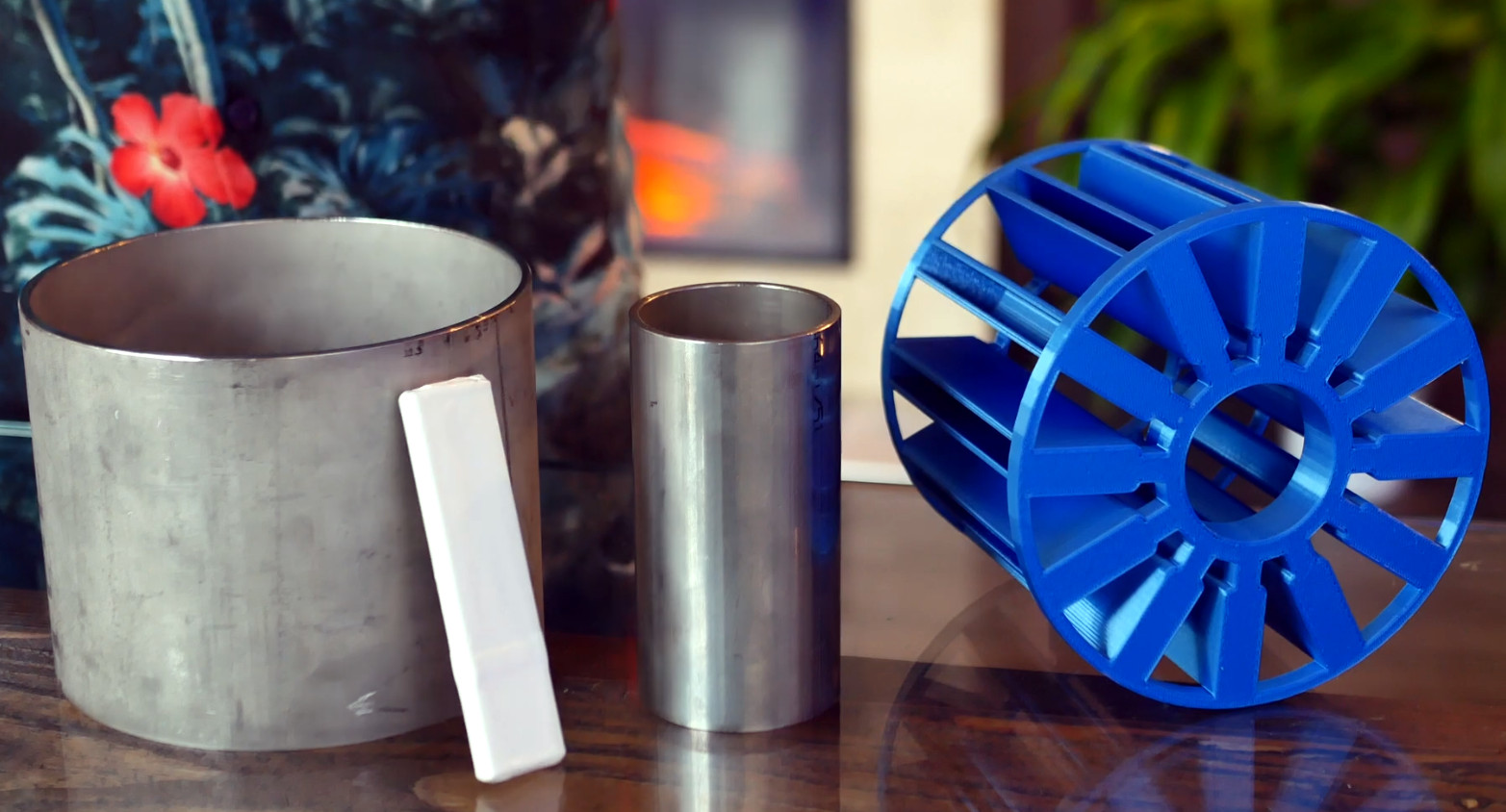
Looking back through the archives, we actually haven’t seen much in the way of homebrew magnetohydrodynamic drives (MHDs) — which is somewhat surprising, as the core concept isn’t nearly as complicated as its syllable-laden name might indicate. You can see results with little more than a magnet, a couple of electrodes, and a bench power supply. The trick is turning these base components into something that might actually have practical value.
That’s where we find [Jay Bowles], who has gone down a bit of a MHD rabbit hole these last few months. His latest MHD unit is a considerable improvement over its predecessor by all practical metrics, and as an added bonus, really nails the look of a futuristic propulsion unit. Even though the all-electric thruster hasn’t gone on a mission to anywhere more exotic than a table-top aquarium, you could easily imagine a pair of them slung under some top secret stealth watercraft.
What’s the magic behind the MHD? When a charge is passed through a pair of submerged electrodes, it interacts with the magnetic field within the drive and causes the electrified water to be accelerated through it. It’s the Lorentz force in action, and if powerful enough, can propel a craft through the water with no noise or moving parts. Beyond the slight downside that it only works in salt water, you can see how there would be considerable interest in such technology. Unsurprisingly, the military has had their eye on large-scale MHD drives for decades.
For his latest MHD drive, [Jay] has arranged the magnets radially and given them a waterproof coating. The core of the thruster is 3D printed and designed so water can move through it smoothly, and the inner and outer electrodes are off-the-shelf stainless steel pipe sections. The idea is that, once the pipes start to break down from electrolysis, it will be easy to swap in a new set. The whole thing was designed with ease of assembly and maintenance in mind, and it shows.
In terms of performance, [Jay] says this new MHD drive reached an exhaust velocity of 50 cm/s and a flow rate of 3650 ml/s while consuming 30 amps at 25 VDC. He calculates that out to 0.2 watts per ml/s of flow, which is a big boost over the previous thruster, which needed 1.2 watts per ml/s. What does all this mean in a practical sense? Hopefully we won’t have to wait long for the answer, as it sounds like the next step is bolting a pair of these improved MHDs onto a boat and taking it out for a spin.
This all might seem like something of a change of pace for [Jay]. After all, the 25 volts getting pumped through these prototype MHDs is nothing compared to the high-voltage experiments we usually see from Plasma Channel. But his newfound interest in marine propulsion actually came about through an attempt to strap a pair of his multi-stage ion thrusters onto a RC catamaran over the summer, so it’s not quite as unrelated as you might think.
Bulked Up MHD Drive Makes Waves While Standing Still
Source: Manila Flash Report

0 Comments